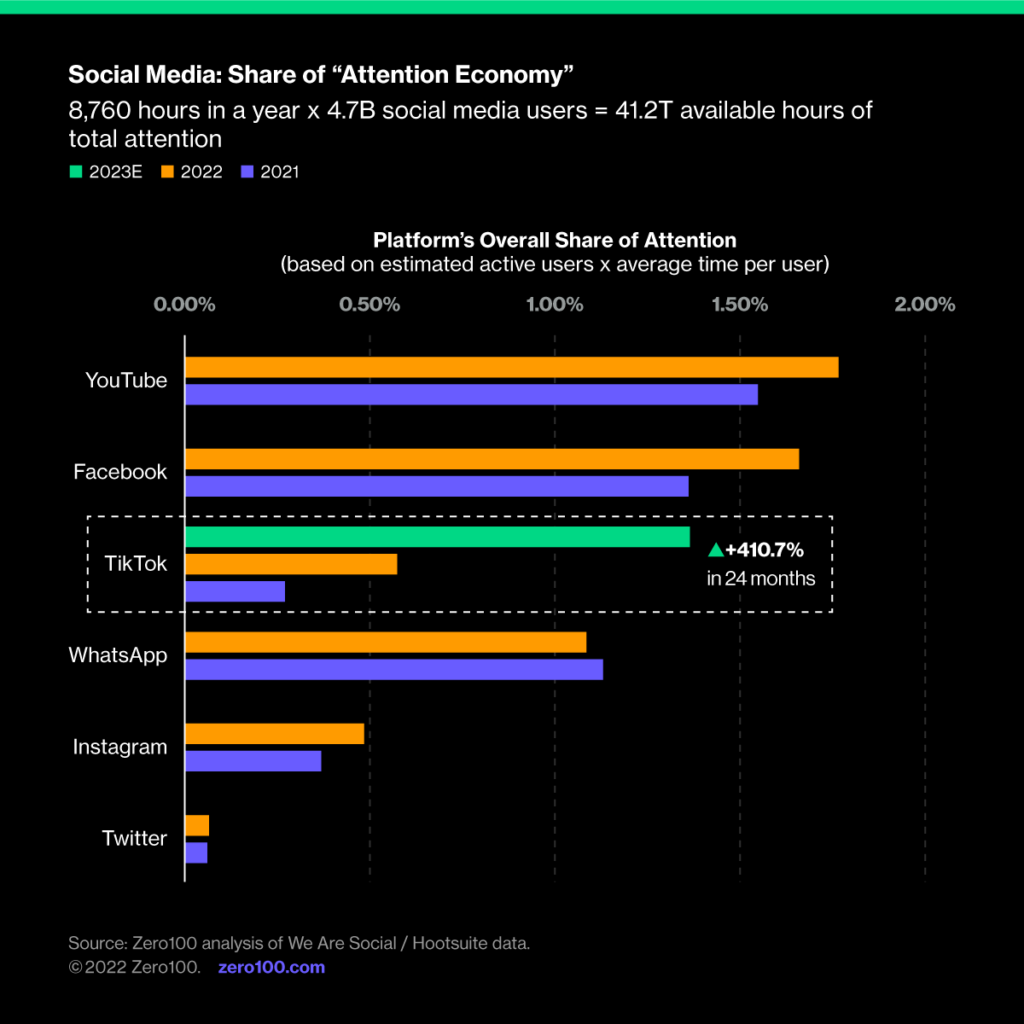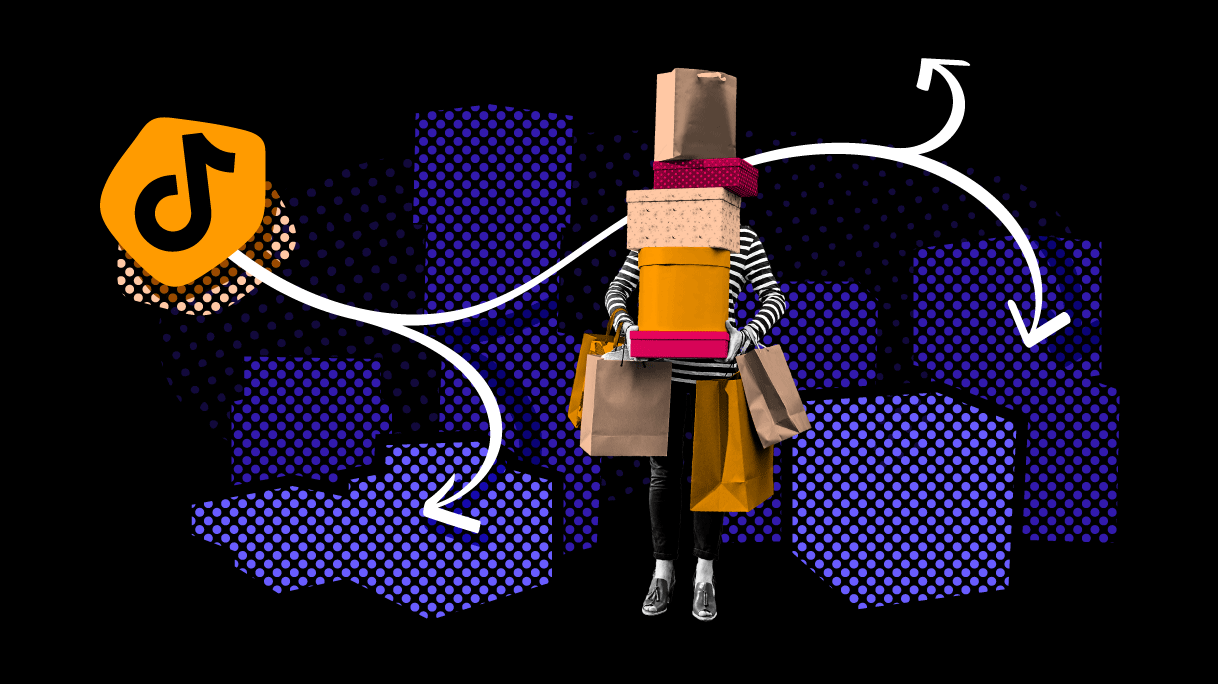What happens when the world's fastest-growing, most addictive social media app turns into a demand chain player? We're about to find out as TikTok prepares to launch live shopping in the US later this month. Friend or foe? Enabler or destroyer? I think it depends on how prepared your supply chain is to engage with engagement.
Digital Demand Keeps Getting Bigger
Zero100 supply chains are all about harnessing digitization to decarbonize operations, which mainly means mastering the digital demand signals from sales channels and user experiences including e-commerce, social media, and all other customer feedback sources. We have argued that digital demand is at least five times more “dense” than digital supply, measured by the total amount of data created, transactions handled, and money invested. We can't prove it yet, but if we're comparing the “digital density” of all the ERP, CAD, MES, etc. systems on the supply side to that of every e-commerce site, social media platform and iPhone app on the demand side, it seems safe to say that digitization of supply is lagging.
And now TikTok is in the game with 1.6 billion monthly active users spending an average of 25.7 hours per month watching content created on a budget that is barely over 1% of what Netflix spends per year. Yikes! If this is the future of digital demand, then supply chain organizations had better get ready for a wild ride.
TikTok Shop has been around for a while in Thailand, Vietnam, Indonesia, Singapore, Philippines, and Malaysia running about 9 million live e-commerce broadcasts per month. An in-house effort by TikTok to launch selling in the UK, however, failed, leading the company to seek a partner with experience – TalkShopLive, an LA-based infrastructure provider for livestreaming sales events by influencers. Livestream shopping on TalkShopLive's platform has been up and running for four years already supporting blue chip brands including Walmart and Microsoft in the US. Contract negotiations are supposedly now underway. I'll bet they figure it out.
The implications for supply chain strategy, both in terms of driving growth and reducing carbon emissions, could be huge.
Engage to Drive Change
Social media is about engagement – getting people to click, “like”, comment and otherwise pay attention. Facebook, Google, Amazon, and Netflix plus countless scrappy, dark, and sometimes nefarious others have made money and (in some cases) trouble with algorithms that maximize user engagement. Tech and media thought leader Scott Galloway estimates that TikTok (launched 2017) accounts for 0.5% of all human engagement worldwide right now.
Based on our analysis of more established social media platforms, that's already on par with Instagram (founded 2010) and about 9x times greater share of the “attention economy” than Twitter (founded 2006)—representing a massive opportunity for business to connect with and harness the supposedly caring younger consumer.As of mid-2022, TikTok already rivaled YouTube in terms of time spent per day by respective US users of each platform. And at their runaway growth rate in active users, they will rival leading platforms by early next year.

What if your supply chain planning, product design and inventory staging were perfectly synched to take advantage of this exploding engagement? Isn't it possible that you could not only be in-stock for hot sales events, but also influence which items moved fastest and what customers should expect for delivery? Could you persuade some to sign up for subscribe-and-save deals or pre-order products? Could you leverage TikTok's 880 million creators to show that people who care about climate change can help by buying and celebrating your product offerings?
Consumers have been notoriously slow to buy sustainable products, despite what they say in surveys. And for those of you who've pioneered sustainability or social responsibility at the urging of ESG investors like Blackrock, far too often it seems you are rewarded with accusations of greenwashing. TikTok Shop could be your chance to flip the bit.
Source, Make and Move with Purpose
Your role as supply chain leaders, strategists, and planners is to tie the carbon story of any pitch you make on this kind of digital demand platform so that everyone can see what happens if they buy. It's about accounting for carbon of course, but it's also about being creative about where you source and manufacture and how the customer gets and maybe even returns your products. Combine these and see if you can start a virtuous circle based on engagement, transparency, and celebration.
After all, if Charli D'Amelio can go viral, why can't the idea of a zero-carbon supply chain?
Critical Reading
THE NEW YORK TIMES
Micron Pledges Up to $100 Billion for Semiconductor Factory in New York
Commentary: Indicating that the federal incentives laid out in the CHIPS and Science Act of 2022 are working, Micron has announced that they are bringing semiconductor manufacturing closer to the United States, by building a computer chip factory in upstate New York.
#semiconductor #manufacturing
TECH CRUNCH
Eclypsium Lands $25M to Secure the Device Supply Chain
Commentary: Supply chain attacks are on the rise across the globe. According to the UE Agency for Cybersecurity, 66% of cyberattacks as of 2021 focused on a supplier's code. Eclypsium is a cloud-based supply chain security solution that provides protection against these threats.
#cyberattack #security
GREENBIZ
Google Launches Startup Accelerator for the Circular Economy
Commentary: Google has announced a 3-month circular economy accelerator program for Seed to Series A startups and NGOs focused on using technology to solve circularity challenges.
#circulareconomy #technology
